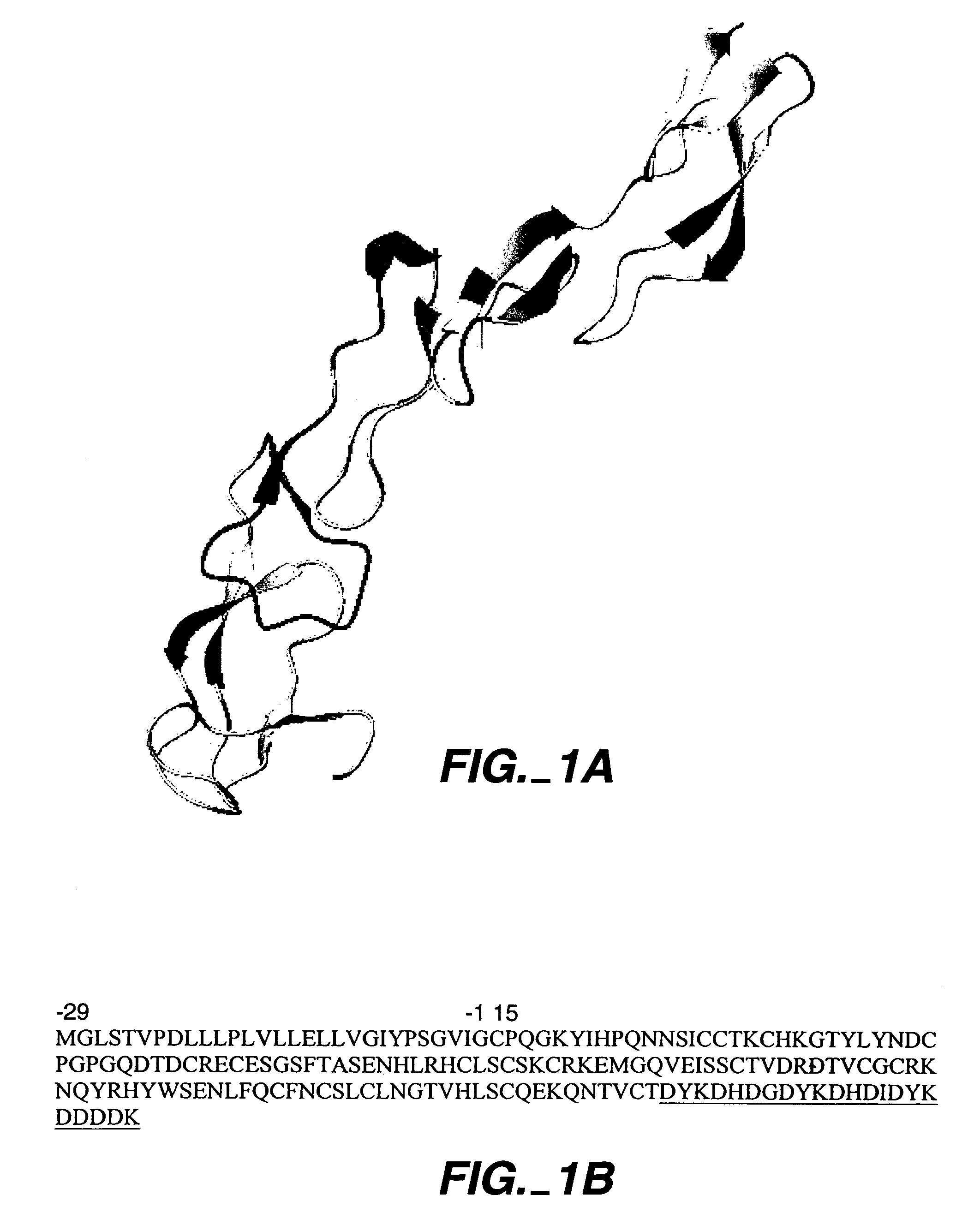Protein based tumor necrosis factor-receptor variants for the treatment of TNF related disorders
a tumor necrosis factor and receptor variant technology, applied in the field of protein-based tumor necrosis factor receptor variants for the treatment of tnf related disorders, can solve the problems of no successful gain-of-function engineered into soluble tnfr, no known design of less immunogenic soluble tnfr1 protein with enhanced
- Summary
- Abstract
- Description
- Claims
- Application Information
AI Technical Summary
Benefits of technology
Problems solved by technology
Method used
Image
Examples
examples
Antagonist Activity of Flag TNF-R Library
Prior to determining variant activity, an immuno-assay to quantitate the amount of variant TNFR in the conditioned media from cells expressing variant TNFR was performed.
[0210]96 well plates were coated with anti-Flag monoclonal antibody (2.5 ug / ml) 100 ul per well, followed by 3% BSA / PBS BSA blocking. Control and TNFR samples were then added for a prescribed time (2 hr). Wild Type Flag TNF R of known quantity was used as a standard in the ELISA. A 3 point dilution of each variant was made to ensure reliable quantitation. After washing the plates with phospho-buffered saline, goat anti-human TNF R antibody (2 ug / ml) 100 ul per well was added for a prescribed time (1 hr). The plates were washed 6 times with PBS and an anti-goat alkaline phosphatase-conjugated antibody was added 1 / 10,000 dilution (X ug / ml) 100 ul per well. Following a prescribed incubation (1 hr) the plates were washed with PBS and the ELISA was completed by adding a luminescen...
PUM
| Property | Measurement | Unit |
|---|---|---|
| pH | aaaaa | aaaaa |
| concentrations | aaaaa | aaaaa |
| affinity | aaaaa | aaaaa |
Abstract
Description
Claims
Application Information
 Login to View More
Login to View More - R&D
- Intellectual Property
- Life Sciences
- Materials
- Tech Scout
- Unparalleled Data Quality
- Higher Quality Content
- 60% Fewer Hallucinations
Browse by: Latest US Patents, China's latest patents, Technical Efficacy Thesaurus, Application Domain, Technology Topic, Popular Technical Reports.
© 2025 PatSnap. All rights reserved.Legal|Privacy policy|Modern Slavery Act Transparency Statement|Sitemap|About US| Contact US: help@patsnap.com



